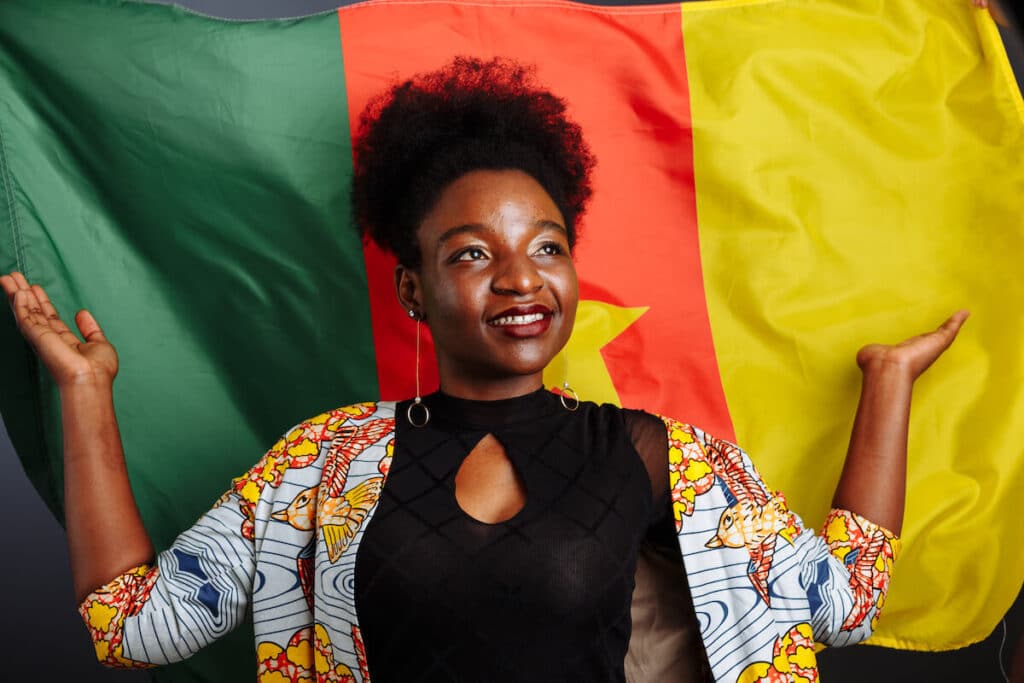With its unique history and relationship to a larger currency union, Cameroon’s currency stands out from other types of money. Get to know the Central African CFA franc, whether you’re visiting Cameroon, sending money there, or just plain curious about world currencies.
The Republic of Cameroon has been an independent country since 1960, and it has one of the strongest economies in the Central African Economic and Monetary Community (CEMAC). That’s because it exports valuable goods including coffee, timber, and oil.
Although Cameroon’s GDP declined in the 1980s due to falling commodity prices, Cameroonian currency has regained strength in recent years, partly due to its international relationships. In fact, Cameroon shares its currency with five other countries in Africa and remains closely linked to the European economic community.
What’s the official Cameroon currency?
Cameroon is one of a handful of countries in the world that doesn’t have its own unique currency. Instead, it belongs to a currency union with five other countries that all use the Central African CFA franc as their official currency.
Since 1993, the Central African CFA franc has come in five printed denominations:
- 500 francs
- 1,000 francs
- 2,000 francs
- 5,000 francs
- 10,000 francs
For a while, the issuing country printed its name on the banknote, but now there’s only a letter code to identify which one issued it. Still, each country designs its own images on the front and back, with Cameroon banknotes featuring scenes related to its natural resources, such as a port, a hydroelectric dam, and oil rig workers.
Since 2006, the CFA franc has been available in eight coin denominations, including 1, 2, 5, 10, 25, 50, 100, and 500 francs (denoted with the abbreviation FCFA).
Although there are technically 100 centimes in each CFA franc, there aren’t any coins or banknotes in smaller denominations.
History of the Central African CFA franc
How long has the Central African CFA franc been in circulation? Since 1945, when it replaced the existing currency in the region, the French Equatorial African franc.
At the time, Cameroon and several other countries in the vicinity were still French colonies, and the currency was at risk of devaluation following the impact of World War II.
To prevent the existing currency from losing value, France issued a new currency and pegged it to the French franc at 1 CFA franc to 1.70 French franc.
In 1999, once France became part of the eurozone, the CFA franc became pegged to the euro instead, at an exchange rate of 655.957 CFA francs to €1 .
Although most of the countries that use the currency are former French colonies, at least one other country, Equatorial Guinea, has joined the CFA franc currency zone, too.
Since the CFA franc is heavily dependent on European monetary policy and the banks that issue it must maintain assets with the French Treasury, some critics have called for a rethinking or replacement of the currency.

5 essential facts about the Central African CFA franc
1. Six African countries use the Central African CFA franc.
As we’ve mentioned, Cameroon isn’t the only country to use the Central African CFA franc. The other five are also located in Central Africa:
- The Central African Republic
- The Republic of the Congo
- Equatorial Guinea
- Gabon
- Chad
Even though each country’s banknotes look slightly different, they have the same value and can be used throughout the currency union.
Equatorial Guinea adopted the currency in 1984. Unlike other countries in the union, it’s a former Spanish colony. They previously used the ekwele as their national currency.
2. The currency code for Cameroon currency is XAF.
When sending and receiving Cameroon currency, or looking up exchange rates using a currency converter, you’ll want to use the currency code XAF. Be sure not to confuse it with the currency code XOF, which refers to the West African CFA franc instead.
3. The West African CFA franc has the same value.
Wait, there are two types of CFA francs? Yes, West Africa has its own version of the CFA franc, which is the official currency in the following countries:
- Benin
- Burkina Faso
- Guinea-Bissau
- Ivory Coast
- Mali
- Niger
- Senegal
- Togo
Both versions of the CFA franc are pegged to the euro, so they have the same value and can be used more or less interchangeably in all fourteen countries.
The entity overseeing the West African CFA franc, the Economic Community of West African States (ECOWAS), is planning to replace the CFA franc with a new currency called the Eco by 2027.
4. The name comes from the French language.
If you’re trying to figure out what the letters “CFA” stand for in English, it may take a while. That’s because CFA is short for Coopération Financière en Afrique Centrale, a French phrase that means “Financial Cooperation in Central Africa.”
In West Africa, CFA stands for something slightly different: Communauté Financière d’Afrique, or “Financial Community of Africa” instead.
5. The Bank of Central African States (BEAC) issues the XAF.
CFA isn’t the only French acronym you’ll find related to Cameroon currency. BEAC is short for Banque des États de l’Afrique Centrale, or the Bank of the Central African States, located in Yaoundé, Cameroon.
This bank is responsible for issuing the Central African CFA franc for all six of the countries that participate in the currency union
Cameroon exchange rate
The Central African CFA franc is pegged to the euro, so the exchange rate does not fluctuate based on the strength of Cameroon’s economy.
However, the CFA franc may still go up or down in value compared to other global currencies, such as the GBP or USD.
That’s one reason it’s important to check the current exchange rate using a currency converter to make sure you’re getting the best deal on your money transfer.
If you’re traveling to Cameroon, you may want to convert money before you go, since only some businesses accept credit cards, and ATMs aren’t widely available.
If you bring foreign currency that’s worth more than 1 million XAF into Cameroon, you’ll need to declare it. You can export as much foreign currency as you want, but you can’t leave Cameroon with more than 20,000 XAF.
